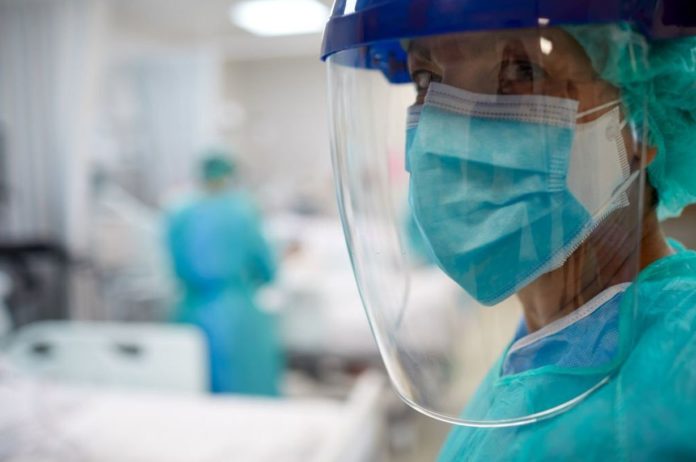New research from the University of East Anglia shows that if you wore a face shield during the pandemic, it likely did not provide a high level of protection from Covid.
Research that was just released today tested 13 different types of face shields in controlled lab environments.
All of the face shields offered some protection, but none offered exceptional defense from outside drops.
In addition to conducting laboratory studies on face shields, the research team polled individuals, including health professionals in middle-income nations (Brazil and Nigeria), regarding their opinions of face shields as PPE.
Face shields have gained popularity since they don’t interfere with breathing, allow for more natural communication than face masks, and offer splash protection, according to Prof. Paul Hunter of the UEA Norwich Medical School.
“They were widely used through the Covid pandemic. But until now there hasn’t been a great deal of evidence about how protective they really are – particularly taking into account how people use them in the real world, and especially in poorer parts of the world.
“We wanted to find out more about how protective different styles of face shields might be, both in the lab and in real-world settings.”
Researchers from the University of East Anglia (UEA) worked with people from the Health and Safety Executive (HSE), which is Britain’s health and safety watchdog for the workplace. They used a “coughing machine” that shot fluorescent drops onto the heads of manikins to test 13 different face shield designs.
The manikin’s face was evaluated from most to least contaminated by the simulated cough droplets.
“The lab tests showed that all of the face shields provided some protection, but none gave high levels of protection against external droplet contamination,” noted Dr. Julii Brainard of UEA’s Norwich Medical School.
The degree of safety was affected by design elements as well as the direction the manikin’s head was directed when it was “coughed” at.
“We found that large gaps around the sides, and sometimes the bottom or top, allow respiratory droplets from other people to get to the face and this means exposure to possible viruses.
“The shields that offered most protection were closed across the forehead and extended well around the sides of the face and below the chin.
“It’s important to know that the lab experiments are in the scenario of someone actively coughing at the shield wearer from close proximity. But the chances of droplets getting around the shield onto the face from just speaking are much lower.”
To understand more about how face shields are used in the real world, the team polled over 600 people in Nigeria and Brazil, including health care workers.
“We wanted to know about how users cleaned them, and the things that mattered most when choosing facial PPE during the pandemic,” said Dr. Brainard.
“Not surprisingly, we found that people want proven protective products that are comfortable, stable on their head, easy to clean and that don’t look strange.
“This study is important because acceptability of facial PPE during the pandemic has been mostly studied in richer countries like the UK or USA. The participants in our study were in Nigeria and Brazil and we shouldn’t assume that people in all countries view facial PPE in the same way.
“It is also important to understand what design features in face shields could be more or less protective, so that people are able to choose the most effective designs.
“Finally, we wanted to know how people cleaned reusable face shields – methylated or surgical spirits were popular, for instance, but so was plain water and soap. Some cleaning chemicals could be incompatible with shield coatings intended to prevent fogging or facilitate quick drying, for instance. Dust outside and fogging inside shields were occasional problems, too,” she added.
In a separate effort, the HSE team evaluated available face shields in the United Kingdom. The findings of this study, as well as further information about the cough simulator, have been published in the journal Annals of Work Exposures and Health.
The HSE team’s microbiologist, Dr. Brian Crook, mentioned: “It is important that people using any type of PPE to protect themselves from infection know how effective it is, but also it’s limitations. We are working with an international standards committee to write guidance towards a better means of providing that information.”
Image Credit: Getty
You were reading: Face shields: New study reveals how protective they really are against COVID
